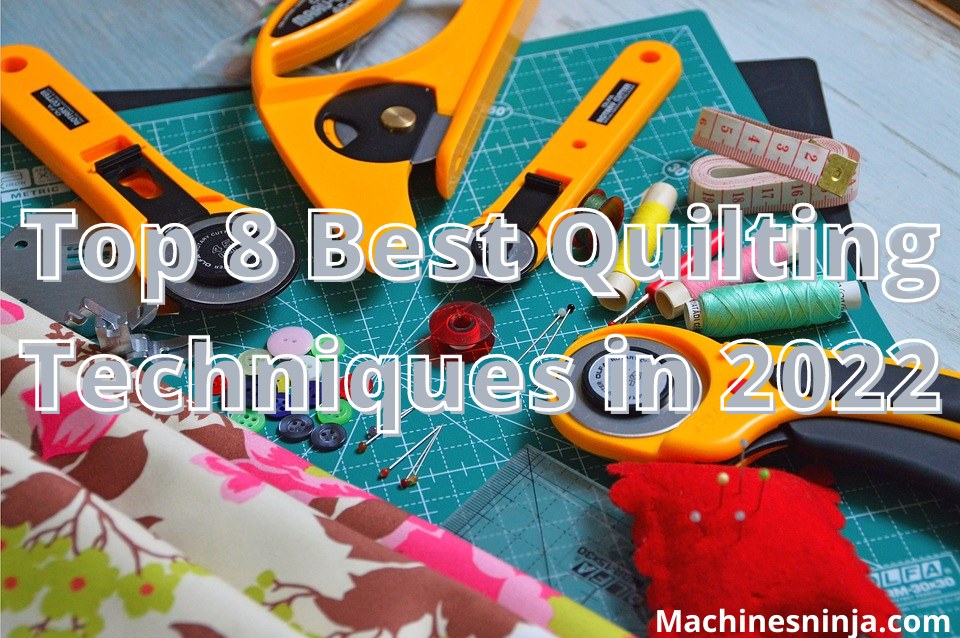Quilting can be difficult, but remember that no one is perfect, no matter how many seams you have to rip.
Whether you’re a beginner or a seasoned quilter, it’s often a great way to look for new helpful hints to add to your arsenal. Be confident that as you gain more experience, you’ll figure out which quilting methods work best for you.

Getting comfortable with the essential skills will help you sew accurate quilts on your first try. In order to get information about sewing machines for quilters, click on Best Large Throat Sewing Machines For Quilting.
These quiet little techniques are, without a doubt, one of the most valuable teaching tools we have, broken out with step-by-step photographs. Here are eight techniques that almost every quilter should master, from cutting to pressing to perfectly measuring borders:
Faux piped binding is somehow time consuming and complicated technique. It might take a little longer to make, but the results are valuable. There is nothing inside it but a small flange.
The binding requires two fabrics, the main fabric, and the accent fabric, to mimic piping. Always try to use an invisible thread because the colored thread will be noticeable on the accent fabric, which may not look good.
No doubt, the stitch is a difficult one and is known as a Morning star. This design is most accurate for making 45-degree diamonds. All you need is to start with a strip set that should be sewed in a staggered manner in the desired order.
Clean your staggered edge first, flip the strip set and make a mark at 45 degrees in the strip set with a seam line. After this, trim the band and slightly flip the strip set right side up, aligning the cut edge with the desired measurement, and cut the strip set.
The method is both less wasteful and more accurate. Individual diamond cutting and sewing are not for the faint of heart.
Border length is frequently evaluated by measuring all along with the quilts outside edges by new quilters. Adding a border to the corners of a quilt does something more than provide a nice frame for your work.
This method ensures that if the quilt is skewed, it will stay that way. Smoothing out slightly bent edges is a breeze with this method.
With each new quilt you sew, your skills will improve. We all make mistakes, both in terms of technique and fabric selection, but our blunders almost always lead to a better understanding of the quilting process.
These miss understandings are just learning opportunities, so examine them and apply what you’ve learned to your next project.
A Cathedral Windows Quilt is a traditional design inspired by the beauty of stained-glass windows that can be pieced by hand or machine.
They are made without batting and have a square area made of muslin with a calico print in the window. The traditional construction method’s folding technique results in a finished quilt back.
The blocks can be of different sizes of rectangles and squares. The windows can be pieced for an even more aesthetic appearance. It’s a lovely way to show off fabric in the window portion of the blocks, no matter how you make it.
Trying to set seams before pressing entitlements to one side is another quick and easy way to strengthen your patchwork.
Although extra pressing may appear to decelerate you down, you’ll discover that perfectly pressed quilt blocks fit around each other nicely without the need for a seam screamer.
Your piecing accuracy will improve immediately if you take a moment to press your quilt blocks as you make them.
While doing applique, cloth tweaks are patterned on a base fabric, then stitched in place by hand or machine, with the raw corners turned into or encased with elegant stitching.
Applique on a quilt can be done in a variety of ways, and it can be plain or even have facets.
The Flying Geese method is quite reliable and fast. It appears in a wide variety of quilts, and this quilting technique eliminates the need to cut tedious triangle after triangle.
This method also allows you to make four identical blocks at the same time. The majority of patterns do not require a single Flying Geese block. Many of them call for four or various combinations of four.
Stitches with all forward movement, such as one’s straight stitch, which is the most frequently been using stitch for machine quilting, are the best to use.
If you try to work from one side to the other, you’ll end up with pleats and puckering. Start quilting in the center of the quilt and work outward.
Place the sandwich between the walking foot and the needle down button and press the down button.
Pieced quilting is the most basic and widely used type of quilting. These quilts are made by sewing fabric pieces together, as the name implies. Any block and any construction technique can be used in patchwork quilts.
All of these basic techniques, from fabric selection to pressing and basting, will form the basis of one’s skills. Quilting styles are almost as numerous as quilters themselves.
As your quilting skills improve, take risks and experiment with different styles to see which one you prefer. If you are new to quilting or want a refresher, these must-understand quilting strategies and patterns are simply what you need.